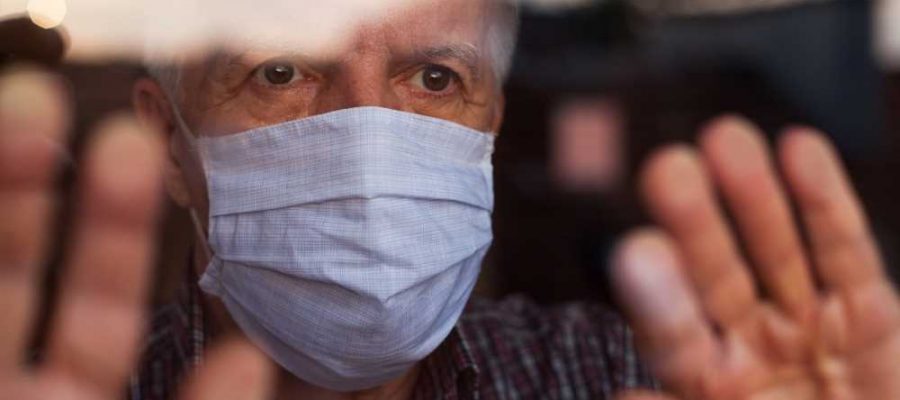
Influence of employment during COVID-19 on cognitive and motor functions among elders
In a recent study published in Scientific Reports, researchers examined the effects of employment on geriatric health during the severe acute respiratory syndrome coronavirus 2 (SARS-CoV-2) outbreak.
 Study: Impact of employment on the elderly in a super-aging society during the COVID-19 pandemic in Japan. Image Credit: Cryptographer/Shutterstock.com
Study: Impact of employment on the elderly in a super-aging society during the COVID-19 pandemic in Japan. Image Credit: Cryptographer/Shutterstock.com
Background
Due to the aging population and the necessity to complement the working-age population, Japan's older population is becoming more employed. This occupation is viewed as a means of preventing cognitive deterioration and lowering the chance of mortality.
The COVID-19 pandemic, on the other hand, has underlined the necessity to research the impact of work on the health of elderly individuals. Elders have avoided going out due to the severity of COVID-19 and the related mortality risk.
A fear has arisen that if individuals do not go out, their activity levels will decline, and their health may deteriorate. Maintaining high levels of physical and mental activity can lower the likelihood of frailty, and being active in social engagements such as work may benefit geriatric health throughout the SARS-CoV-2 outbreak.
However, it is uncertain whether continuing to work during COVID-19 improved cognitive and motor abilities compared to regular periods.
About the study
In the present analysis, researchers explored the cognitive and motor functional implications of employment during COVID-19 among elderly individuals.
The study included 144 individuals aged 65 years and older who undertook medical examinations at three centers (i.e., Hamate District Public Hall, Yamate District Public Hall, and Health and Welfare Center) in the Kaizuka city of Osaka Prefecture over six days between August and September 2021. The individuals were divided into employed and non-employed groups.
A one-to-one survey was conducted, querying the employment status and income of the participants. The motor function was assessed based on the skeletal muscle index (SMI), 2.4-meter walking speed (m/s), bone mineral density, and a two-step test.
General cognitive function was assessed using the Mini-Mental State Examination-Japanese edition (MMSE-J), and attention function (selection, persistence, distribution, and transfer) was assessed using the Trail Making Test-Parts A and B (TMT-A/B).
In addition, frailty (weakness, weight loss, exhaustion, slowness, and low activity level) was assessed using the modified Japanese edition of the Cardiovascular Health Study (J-CHS) criteria. Univariate analysis and logistic regression models were used to determine the odds ratios (ORs), adjusting for gender and age. The team excluded individuals restricted from exercising by health professionals and those with inadequate data.
The mean walking speed was determined based on the duration of completing a 2.0-meter walk at regular speed. The dominant hand’s grip strength was measured by grip strength meters, and the SMI values were determined based on body composition, height, and bio-impedance. The heel bone density (right side) was determined ultrasonically and compared to the corresponding bone density values for young adults.
Results
Among the study participants, the mean age was 76 years; 33 (23%) were employed, and 111 (77%) were unemployed. Among employed individuals, 16 (49%) were female, whereas among those unemployed, 87 (78%) were female.
Concerning employment reasons, ten individuals (30%) worked for health, five (15%) for social connections, five (15%) for income, four (12%) for survival, three (nine percent) for additional income, two (six percent) for having plenty of time to spare, and four (12%) for other reasons.
Concerning employment type, one individual (three percent) worked full-time, 18 (55%) worked part-time, eight (24%) were self-employed, and six (18%) were categorized as other employment types.
The univariate analysis showed significantly higher SMI values and grip strength among employed individuals, likely due to the skewed gender ratio among the groups.
Concerning motor function, non-significant differences were observed in the locomotive two-step test, frailty, and walking speed between the groups. TMT-A was an independent factor for employed individuals (OR, 0.96). Working individuals were significantly more attentive than non-working individuals, as indicated by significantly less time on the TMT-A.
Conclusion
Overall, the study findings showed significantly higher attention among employed individuals than their unemployed counterparts during COVID-19, likely because attention is required to execute job-related tasks.
In addition, an individual needs to process visual data and write while performing jobs. Future studies must investigate the component of the attention function impacted by employment, considering underlying medical conditions affecting motor and cognitive functions and including larger sample sizes to improve the generalizability of the study findings.
- Imaoka, M., Tazaki, F., Hida, M., et al., (2023) Impact of employment on the elderly in a super-aging society during the COVID-19 pandemic in Japan. Sci Rep 13, 18564. doi: https://doi.org/10.1038/s41598-023-45270-5. https://www.nature.com/articles/s41598-023-45270-5
Posted in: Medical Science News | Medical Research News | Medical Condition News | Disease/Infection News
Tags: Aging, Bone, Bone Mineral Density, Cognitive Function, Coronavirus, covid-19, Exhaustion, Mortality, Muscle, Pandemic, Research, Respiratory, SARS, SARS-CoV-2, Severe Acute Respiratory, Severe Acute Respiratory Syndrome, Syndrome, Walking, Weight Loss

Written by
Pooja Toshniwal Paharia
Dr. based clinical-radiological diagnosis and management of oral lesions and conditions and associated maxillofacial disorders.